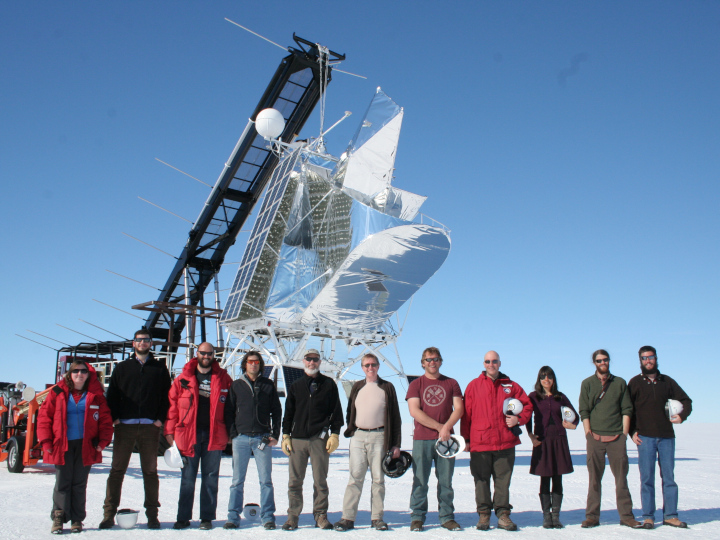About
The Balloon-borne Large Aperture Submillimeter Telescope (BLAST) program is probing the link between Galactic magnetic fields and star formation. After decades of study, the physical processes regulating star formation still remain poorly understood. Large-scale observations of star forming regions provide counts of the number of dense clouds each of which will eventually evolve into tens to hundreds of stars. However, when simple models of gravitational collapse are applied to the clouds they yield a Galactic star formation rate (SFR) which is many times what is actually observed. Some process or combination of processes must be slowing the collapse of the clouds. The two prevailing theories involve turbulence which prevents the effective dissipation of energy and Galactic magnetic fields which are captured and squeezed by the collapsing cloud provide a mechanism for mechanical support.
The Balloon-borne Large Aperture Telescope (BLASTPol) and its planned successor, Super BLASTPol, are the first instruments to combine the sensitivity and mapping speed necessary to trace magnetic fields across entire clouds with the resolution to trace fields down into dense substructures, including cores and laments. Super BLAST-Pol will provide polarization at 250, 350 and 500 μm, with a diffraction limited beam FWHM of 22 arcseconds at 250 μm. Super BLASTPol therefore provides the critical link between the PLANCK all-sky polarization maps with 5′ resolution and ALMA’s ultra-high resolution, but with only a 20 arcsecond field of view. BLASTPol will use the PLANCK data to refine its target selection, then ALMA will utilize BLASTPol maps to “zero in” on areas of particular interest. Together, these three instruments will be able to probe the inner workings of star formation with previously unreachable resolution, sensitivity and scope.
